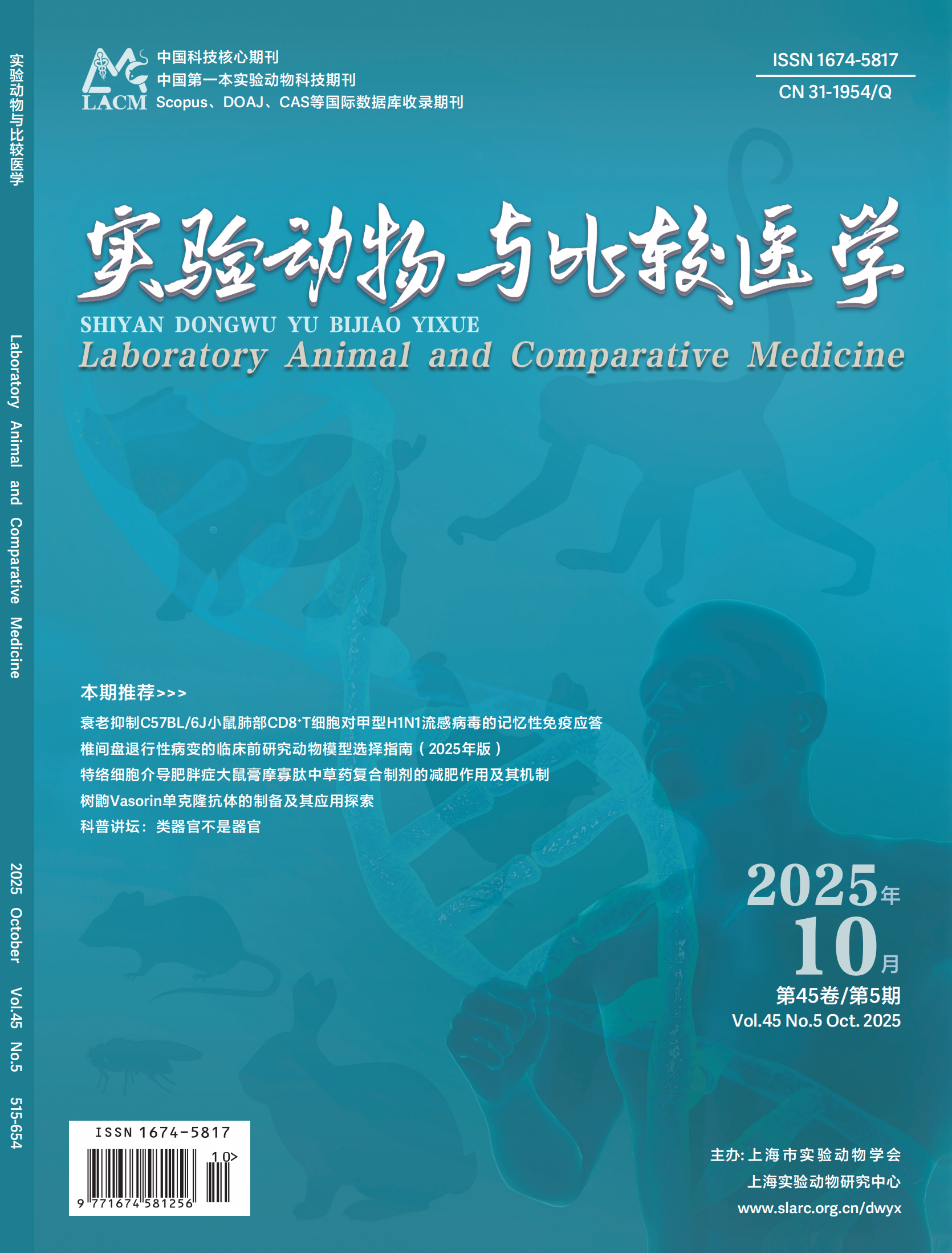-
High-fat Diet Induced Cynomolgus Monkey Model of Non-alcoholic Fatty Liver Disease
- GAO Shiping, LI Feng, ZHA Sifan
-
2020, 40(2):
123-127.
DOI: 10.3969/j.issn.1674-5817.2020.02.006
-
 Asbtract
(
794 )
Asbtract
(
794 )
 PDF (1301KB)
(
872
)
PDF (1301KB)
(
872
)
-
References |
Related Articles |
Metrics
Objective To establish non-alcoholic fatty liver disease (NAFLD) animal model induced by high-fat diet, and to analysis the effect of high-fat feeding time for animal NAFLD formation, exploring the correlation between feeding time of high-fat diet and serum alanine aminotransferase (ALT), aspartate aminotransferase (AST), triglycerides (TG), total cholesterol (TC), high-density lipoprotein (HDL), low density lipoprotein (LDL), fatty liver, and fibrosis formation. Methods Before the experiment, basic blood samples were collected from 700 healthy cynomolgus monkeys, then fed with high-fat diet, some of the monkeys were sampled at 1, 2, 3, 4, 5, 6 and 7 years respectively after being fed with high-fat diet and anaesthetized with ketamine hydrochloride, and the blood were collected for detection of ALT, AST, TG, TC, HDL and LDL indicators, and liver tissue biopsy was performed. Results After 2 years of high-fat feed, the serum ALT, AST, TG, TC and LDL levels of cynomolgus monkeys were significantly increased (P<0.01), and HDL level was significantly decreased (P<0.01). The feeding time of high-fat feed was significantly correlated with ALT, AST, TG, TC, liver adipose and fibrosis at the level of 0.01 (bilateral) (r=0.127, 0.121, 0.246, 0.128, 0.306, 0.220), but negatively correlated with HDL (r=-0.298, P<0.05), and significantly correlated with LDL at the level of 0.05 (bilateral) (r=0.081). Histopathology showed that serious fatty degeneration and balloon-like degeneration occurred in the liver over time, fatty liver followed by hepatitis and fibrosis. Conclusion The high-fat diet can significantly increase blood lipid and liver enzyme activity indexes in cynomolgus monkeys, the liver lipid aggregation and inflammatory infiltration are obvious, indicating that high-fat diet can successfully induce NAFLD model and promote the development of NAFLD.
-

